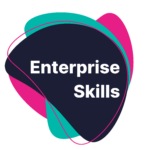Syllabus: WJEC - GCSE Business
Module: 1. Business Activity
Lesson: 1.2 Providing Goods and Services
Jump to Section:
Introduction
This unit sits within the WJEC GCSE Business specification’s first major topic: Business Activity. The focus here is on how businesses provide goods and services to meet customer needs. It introduces key distinctions—like public versus private sector, or consumer versus producer goods—that underpin broader business understanding. Aligned with real-world contexts, this topic encourages students to think critically about how businesses operate at different scales and how resources are used to create value. It also builds the foundations for later units by establishing the vocabulary and frameworks that appear in operations, marketing, and enterprise.
Key Concepts
This subtopic, “1.2 Providing goods and services”, asks students to:
-
Understand what goods and services are and who they are for (consumers vs. producers).
-
Identify the resources needed to produce goods and services: raw materials, machinery, labour, and premises.
-
Distinguish between:
-
Private and public sector organisations.
-
Consumer goods (durable and non-durable) vs. producer goods.
-
Personal services (e.g. hairdressing) vs. commercial services (e.g. logistics).
-
Students should also recognise examples of organisations operating in different sectors and categories, though detailed public sector knowledge isn’t required.
Real-World Relevance
Students often engage with this topic more naturally than they realise. Many are regular consumers of both goods and services—buying trainers online, streaming music, booking driving lessons. A useful entry point is comparing a local café (private sector, consumer goods and services) with a local NHS clinic (public sector, providing health services). You might also explore Amazon’s operation as a producer and seller of both goods (e.g. Kindles) and services (e.g. Prime delivery).
Another case study example: IKEA provides consumer goods (furniture), but also commercial services (design support for businesses) and producer goods (bulk sales to landlords). These layers allow students to apply classification thinking to real brands.
How It’s Assessed
This topic is assessed in both WJEC GCSE Business exam papers:
-
Paper 1 and Paper 2 may include short-answer and longer application questions around classifying goods/services, sector types, or explaining production resources.
-
Question types include:
-
“State” or “Define” (e.g. “State two examples of durable goods.”)
-
“Explain” (e.g. “Explain the difference between the public and private sectors.”)
-
“Apply” (e.g. “Using the case study, explain why the business provides both goods and services.”)
-
“Analyse” or “Evaluate” questions can appear later in assessments, requiring students to discuss impacts of decisions related to business type or sector.
-
Encourage learners to draw on real examples and use subject-specific vocabulary precisely. Diagrams aren’t required here, but tables or charts may appear as source material.
Enterprise Skills Integration
This unit builds early enterprise thinking by prompting students to consider how businesses create value:
-
Problem solving: What resources are needed to meet a specific customer need?
-
Decision making: Should a business provide a product, a service, or both?
-
Initiative and organisation: How might an entrepreneur decide between targeting consumers vs. businesses?
This is a great opportunity to simulate decision-making. For example, students could create a mini business plan choosing what goods and services they’d provide and why, using resource analysis and customer segmentation.
Careers Links
This topic connects strongly to Gatsby Benchmarks 4 (linking curriculum learning to careers) and 5 (encounters with employers). It introduces:
-
Public vs. private sector pathways—nurses vs. hospitality managers.
-
Service industry roles (e.g. personal trainer, hairdresser, logistics coordinator).
-
Entrepreneurial thinking—useful for students considering self-employment or business studies post-16.
Careers leads might use this topic to arrange virtual employer talks or role-spotlights showing how businesses organise their offer across goods and services.
Teaching Notes
Teaching tips:
-
Use relatable, local examples to reinforce private vs. public sector distinctions.
-
Encourage students to analyse businesses they interact with weekly—retailers, cafés, online platforms.
-
Short tasks like “match the business to the good/service it provides” help cement classifications.
Common pitfalls:
-
Confusing consumer vs. producer goods.
-
Assuming all public services are free or not profit-oriented.
-
Overlooking services that involve both consumer and commercial elements.
Extension activities:
-
Research task: students compare two organisations (e.g. Tesco vs. NHS) across the classification dimensions.
-
Scenario task: “You’ve just been given £5000 to start a business. What goods or services would you provide, and why?”


